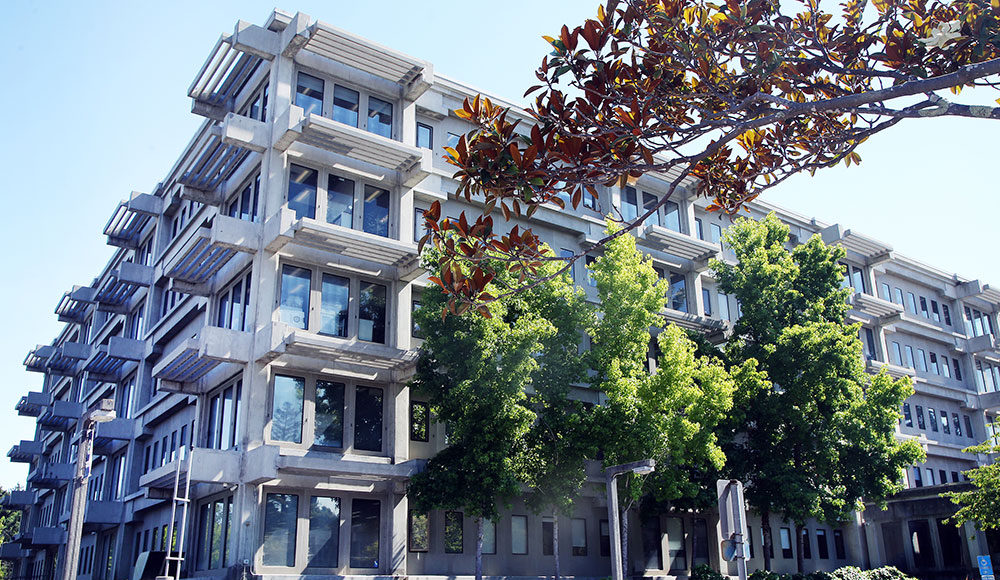A report raises questions about whether the City of Santa Cruz is properly tracking who lives in “inclusionary units”—those set aside as affordable housing—within the city to make sure preference is given to Santa Cruz residents.
The timing is uncomfortable for the city as thousands of market-rate units have been approved and the supply of inclusionary units is set to expand. The City of Santa Cruz mandates that private developers set aside 20% of a project’s homes at “affordable rents.”
But nobody knows who is living in these units, according to the report done by the Santa Cruz County Civil Grand Jury, a non-subpoenaing group of citizens tasked with investigating local government.
This is a problem because there is an official, on-the-books locals preference for these homes. Under Santa Cruz municipal code, the priority for inclusionary housing is given to Santa Cruz residents and workers living here for more than one year.
“The city keeps no records, does no tracking, gathers no data, and has no evidence to determine if preference is being given to local residents and local workers when renting Inclusionary Housing units,” according to the report.
Meanwhile, Santa Cruz is the most expensive rental market in the nation for a two-bedroom apartment when adjusted to average income, according to the 2024 Out of Reach report.
There are currently 240 below-market rate inclusionary units in the city: 147 rentals and 93 owned-apartments. This is set to expand tremendously in the years to come if funding doesn’t dry up, according to the report. More than 600 inclusionary/affordable units are proposed in future development projects.
“Affordable” is a nebulous and general term. The amount one pays to rent or buy these homes is set by the “average median income” and the degree to which one makes more or less than that. The categories are “extremely-low,””very-low,” “low” (all below average) or “moderate” income.
Moderate income is defined by the state of California as 80%-120% of the average median income of the area. In recent years, the median income in Santa Cruz County has risen to around $92,950. This means someone making up to $111,550 could be eligible for affordable housing, according to the report.
Does “Moderate Income” Count as Affordable?
There is also confusion about whether the city’s ordinance covers “moderate incomes” for inclusionary housing. At stake is whether the city is obeying its own laws.
“The city has conflicting and contradictory policies on whether Inclusionary Housing applies to low, very low and extremely low income earners only, or whether moderate income earners are also eligible. The city cannot state what percentage of the city’s affordable housing is occupied by income-verified UCSC students,” the report says.
The report cites a line from the 2018 update to Measure O, the local ordinance enshrining inclusionary units, which reads, “All affordable units shall be rented or sold to extremely-low, very-low, or low income households.” However, on the city’s website it says that inclusionary units are available to “moderate income households.”
In practice the city seems to count “moderate income” as affordable, the report says. A 120-apartment building proposed at 831 Almar Ave. has nine “moderate income” units as part of its affordability requirement.
This might have more to do with the new pro-housing state regime than the city.
It should come as no surprise to readers of Good Times that all roads lead back to density bonus law, AB 1287. This is the 100% density bonus law which in this case also allows “moderate income housing” to be used as part of the base density before the building is supersized, according to a longtime local planner.
The answer to whether “moderate income” is affordable is more confusing because the city’s code defines “affordable housing units” and “inclusionary housing units” as two separate things.
“Affordable housing” is a more general term that the city’s inclusionary ordinance falls under. While “inclusionary housing” is strictly the city’s 20%, “affordable housing” applies to projects with state money or 100% affordable projects such as Pacific Station and Cedar Street Housing.
Since at least 2007, “affordable housing” has been an umbrella term that includes “moderate income housing” as defined in the city’s code but is not limited to it, according to Director of Planning Lee Butler.
So while inclusionary housing does not include “moderate income housing” definitionally, it is a type of “affordable housing” which does.
Recommendations
The report had three recommendations. First, the City of Santa Cruz should create “an ongoing-system to track” who is living in inclusionary units; second, the city should explain if “moderate income” counts for the inclusionary requirement. Also the jury recommends that the city keep track of the number of UCSC students living in inclusionary units for use in negotiations.
In response, the city said that the Economic Development and Housing Departments are preparing responses to the grand jury report for September.













